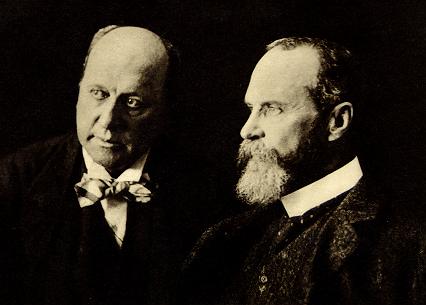"Climate-Treaty Draft Proposes Rich Countries Eliminate Most CO2
By Alex Morales and Jeremy Van Loon
May 20 (Bloomberg) -- The United Nations’ first draft of a new treaty to stem global warming suggests goals such as the near elimination of greenhouse-gas emissions by mid-century in developed countries including the U.S. and Japan.
China, India and other emerging economies would have to aim for a 25 percent reduction of heat-trapping gases, under a separate option that would mark the first-ever target for developing nations.
The 53-page text, posted today on the Web site of the UN Framework Convention on Climate Change, will now be refined by 192 countries in negotiations to forge a new deal to succeed the 1997 Kyoto Protocol climate-protection treaty.
“Emissions need to come as close to zero as possible by 2050, that’s the scientific reality,” Stephanie Tunmore, climate campaigner for the environmental group Greenpeace, said today in a telephone interview. “Someone has to take this process by the horns and give it a good shake.”
Today’s text suggests ways for countries to stem global warming also by sharing clean-energy technology. Richer nations were urged to aid developing economies in adapting to effects of rising temperatures. Limits on gases such as carbon dioxide for 37 nations under the existing Kyoto accord expire in 2012.
“This document marks an important point on our road,” UNFCCC Executive Secretary Yvo de Boer said in a statement. “It’s the first time real negotiating text will be on the table which can serve as a basis for governments to start drafting” a final agreement.
Talks Resume
The U.S. refused to ratify the Kyoto treaty because it didn’t set CO2 caps for major developing countries such as China. The current round of talks must close the gap between the two countries, the world’s biggest emitters.
The next round of UN-sponsored talks begins June 1 in Bonn, Germany. Nations’ envoys will then debate today’s proposals.
“As is customary in the practice of negotiation, it is envisaged that the text will be a ‘living document,’ with parties modifying it and bringing new ideas to bear,” wrote Michael Zammit Cutajar, the UN official who drafted the paper.
Cutajar outlined several potential global goals. One would stabilize emissions at a level to ensure the average temperature doesn’t rise by more than 2 degrees Celsius (3.6 degrees Fahrenheit) above pre-industrial levels. Another aims at keeping the increase below 1.5 degrees. Temperatures have already risen by about 0.8 degrees since the mid-1800s. Five possible time- frames are listed for when total global emissions should peak.
“There are so many routes forward here as to confound our expectations of just where it is we’re going,” Steven Knell, a London-based energy analyst at the economic consultant Global Insight Inc., said today in an e-mailed response to questions.
Carbon Weigh-In
Another plan would reduce global average annual greenhouse- gas emissions to about 2 metric tons per person. That compares with 19.78 tons for the average U.S. citizen, 7.99 tons for a typical European and 4.58 tons per Chinese in 2006, according to the most recent data from the U.S. Department of Energy.
The draft includes options to cut CO2 concentrations in the atmosphere to 350 parts per million from about 385 now.
Emissions limits for individual nations weren’t included, though many have already pledged goals. The 27-nation European Union has said it will cut gas output by 30 percent from 1990 levels in 2020, provided other nations follow suit.
U.S. President Barack Obama has said U.S. emissions will return to 1990 levels in the same timeframe, and Australia is committed to a reduction of as much as 25 percent from 2000.
“We have an almost complete list of industrialized nations’ pledges to cut emissions after 2012, so governments can see now more clearly where they are in comparison to each other, and can build a higher ambition on that basis,” de Boer said.
Glaciers, Deserts
When establishing CO2 emissions limits, a nation’s population trends, ease of access to low-carbon energy supply and economic development will be considered, the text said.
Money for adapting to climate change will be focused on nations and regions with tropical glaciers, those affected by desertification in Africa and low-lying areas at risk of flooding from a rise in sea level, the document said.
An insurance system and venture-capital funds to help countries adapt to extreme weather events and risks to crop production and food security were also proposed. Wealthy countries contributing to adaptation funds will be able to monitor use of the money.
Countries not meeting their targets may have to pay a fine in the form of contributing more money to an adaptation fund that will help nations deal with the effects of climate change, according to one proposal. Envoys haven’t agreed on whether the accord will be a new treaty, a series of legally binding decisions, or an expanded version of Kyoto, the document said.
“Everybody wants to keep everything on the table up until the last minute to maximize their chances of their piece of the pie being in the final agreement,” Greenpeace’s Tunmore said.
To contact the reporter on this story: Alex Morales in London at amorales2@bloomberg.net; Jeremy van Loon in Berlin at jvanloon@bloomberg.net;"
"Structure of the negotiating textI. A SHARED VISION FOR LONG-TERM COOPERATIVE ACTION
II. ENHANCED ACTION ON ADAPTATION
A. Objectives, scope and guiding principles
B. Implementation of adaptation action
C. Means of implementation
D. Risk reduction, management and sharing
E. Institutional arrangements
F. Monitoring and review of adaptation action and support
III. ENHANCED ACTION ON MITIGATION
A. Mitigation by developed countries
1. Nationally appropriate mitigation commitments or actions by developed countries
2. Measurement, reporting and verification of commitments or actions
3. Compliance with quantified emission limitation and reduction objectives
B. Mitigation by developing countries
1. Nationally appropriate mitigation actions by developing countries
2. Means of implementation
3. Measurement, reporting and verification of actions
4. Measurement, reporting and verification of support
5. Institutional arrangements
C. Policy approaches and positive incentives on issues relating to reducing emissions from
deforestation and forest degradation in developing countries; and the role of conservation,
sustainable management of forests and enhancement of forest carbon stocks in developing countries
1. Objectives, scope and guiding principles
2. Means of implementation
3. Measurement, reporting and verification of actions
4. Measurement, reporting and verification of support
5. Institutional arrangements, including funds
D. Cooperative sectoral approaches and sector-specific actions
E. Various approaches to enhance the cost-effectiveness of, and to promote, mitigation actions
F. Economic and social consequences of response measures
IV. ENHANCED ACTION ON FINANCING, TECHNOLOGY AND CAPACITY-BUILDING
A. Enhanced action on the provision of financial resources and investment
1. Objectives, scope and guiding principles
2. Generation of financial resources
3. Institutional arrangements, including funds
B. Enhanced action on technology
1. Objectives, scope and guiding principles
2. Cooperation on technology research, development, diffusion and transfer
3. Institutional arrangements
C. Capacity-building"







































No comments:
Post a Comment